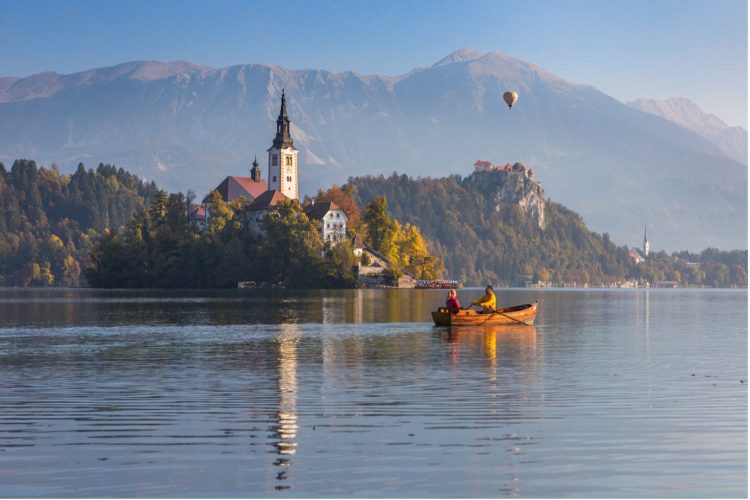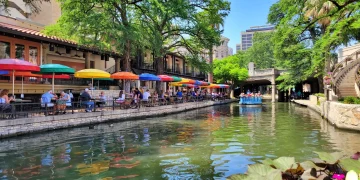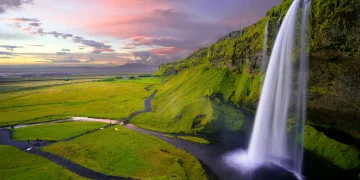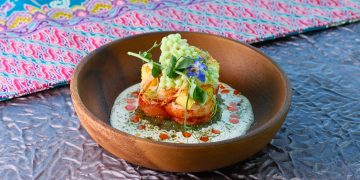An Unexpected Shift in Europe’s Wine Tourism Map
In a year where Tuscany’s vineyards groaned under the weight of selfie sticks and Bordeaux’s wine trails blurred into tourist cliches, Slovenia’s Goriška Brda and Vipava Valley quietly emerged as Europe’s new oenophile frontier. Tucked between the Alps and the Adriatic Sea, these rolling hills of terracotta-roofed villages, steep vineyards, and farm-to-table feasts drew in more than wine lovers—they attracted seekers of intimacy, authenticity, and flavors impossible to replicate.
While Slovenia has long been known to travelers as a gateway to nature—thanks to destinations like Lake Bled and the Soča River—it wasn’t until early 2024 that its wine regions found themselves on the radar of global gourmands and slow-travel devotees. Italian spillover from Friuli and Venice was the initial driver. But the real catalyst came in the form of quietly viral content: YouTube videos showcasing long lunches under walnut trees, vlogs of cellar tastings led by vintners who speak in metaphors, and TikToks of golden-hour walks through rows of Rebula grapes.
Now, Slovenia’s wine country isn’t just a detour—it’s a destination in its own right.
From Overlooked Borderland to Viral Wine Heaven
Goriška Brda, often referred to as “Slovenia’s Tuscany,” lies within touching distance of Italy’s Friuli-Venezia Giulia region. For years, it functioned as a charming but under-visited borderland. Its wines were prized locally but rarely exported. Even Slovenians often favored Italy or Croatia for weekend vineyard getaways.
But in 2024, this changed dramatically. Following the easing of travel bottlenecks and a rising interest in alternative wine destinations, Goriška Brda saw a 45% year-on-year increase in international bookings, according to Slovenia’s Tourism Board. Wine influencers from Milan and Vienna began posting about tiny wineries like Movia and Ščurek. The aesthetic was irresistible: golden hills, hand-harvested grapes, ancient stone villages, and tastings that felt like family reunions rather than commercial transactions.
At the same time, the nearby Vipava Valley began cultivating a niche identity. Known for its mineral-rich whites and native varietals like Zelen and Pinela, Vipava offered a different pace and personality. While Goriška Brda exudes rustic charm, Vipava feels like a rawer, wilder version of Burgundy—less polished, more elemental.
By spring, both regions were buzzing with visitors—most arriving not by tour bus, but rental car. This wasn’t mass tourism. This was the new wave of “gourmet pilgrims.”
The Power of YouTube and the Rise of Visual Seduction
What truly put Slovenia’s wine villages on the global stage in 2024 wasn’t a travel magazine or tourism campaign—it was video storytelling.
A single video titled “I Had the Best Wine of My Life in a Country I Can’t Spell” by travel vlogger James Ko (1.7M subscribers) garnered over 3 million views in a matter of weeks. Shot in Goriška Brda, the video showed Ko stumbling into a harvest celebration, eating roasted duck with plum sauce, and sipping Rebula in a candlelit stone cellar. The tone wasn’t performative. It felt like a secret uncovered.
Meanwhile, food-focused creators like EatPrayPinot and The Wandering Chef posted multi-course Slovenian meals at guesthouses where there’s no menu, just a grandmother’s garden and decades of intuition. One episode in the Vipava Valley featured a cellar dinner at Majerija, where wine pairings were explained not with notes and scores, but with family stories.
As these videos spread, viewers weren’t just bookmarking destinations—they were emotionally investing in the narrative of “discovered slowness.” Slovenia’s wine villages became a new kind of luxury: places where time lingers, hands touch soil, and silence enhances flavor.
Farm Dinners, Guesthouse Stays, and the Romance of Slowness
Part of the appeal of these wine regions lies in what happens outside the tasting rooms. Accommodations here aren’t just beds—they’re extensions of the land.
Guesthouses like Belica in Medana or Saksida in Dornberk combine rustic comfort with culinary immersion. Guests are encouraged to visit gardens, help pick herbs, and even learn how to cure pršut (Slovenian prosciutto). Evening meals are long, multi-course affairs served outdoors under apricot trees, often accompanied by the family dog and a bottle the winemaker “was saving for someone who’d appreciate it.”
There are no minibars, no room service, no Instagrammable infinity pools. But there’s wood-smoke in the morning, fresh eggs on your plate, and a sense that you’ve been allowed into a rhythm the world forgot.
It’s this slow, generous hospitality that sets Slovenian wine villages apart. And it explains why so many visitors have turned into repeat travelers—or even investors in tiny wine cooperatives.
Italy’s Spillover, But Not a Copy
Some skeptics dismiss Slovenia’s wine tourism boom as Italy’s overflow. And yes, the proximity to Friuli matters. Many tourists find themselves here after visiting Trieste or Udine. Some follow wine trails from Venice into Brda as a side adventure.
But the experiences diverge sharply.
Italian wine regions—while beautiful—can feel rehearsed. In Slovenia, nothing is too curated. Wine tastings may happen in garages, in vineyards, or at kitchen tables. Many families have no staff; you’re hosted by the owner, poured a glass while she bakes bread, or while he checks the fermenting steel tanks.

There’s also a stronger emphasis on native varietals. Rather than chasing Chardonnay or Merlot, Slovenian winemakers proudly champion local grapes like Teran, Zelen, and Rebula. These wines don’t just reflect place—they taste like defiance. A refusal to become globalized.
And while Italy’s regions often compete against each other in brand identity—Tuscany vs. Piedmont vs. Sicily—Slovenia presents its wine villages as interwoven, complementary expressions of terroir. The message isn’t “We’re better,” but “We’re different, and ready for you to notice.”
Why 2024 Was the Perfect Storm for Slovenian Wine Country
Several factors aligned to make 2024 the breakout year for Slovenia’s wine regions. The first was infrastructure. New direct flights into Ljubljana and Trieste made access easier. Highway improvements shortened drive times to Vipava and Brda from major cities. EV charging stations were added to rural guesthouses. This all lowered friction for independent travelers.
The second was timing. As European travelers sought post-pandemic depth over decadence, Slovenia offered precisely what they wanted: safety, slowness, soul.
And third, there was the growing exhaustion with “over-itinerary” trips. In 2024, more people searched for “quiet luxury” and “nature + food retreat” than for “bucket list Europe.” Slovenia’s wine villages were, to use the internet’s favorite travel term, “underrated.” And thus, perfect.
The Emotional Impact of Under-Tourism
There’s a difference between discovering something new and rediscovering something lost. For many travelers in 2024, Slovenia’s wine country felt like the latter.
They weren’t just tasting new wines—they were remembering what it felt like to be surprised, to be welcomed without being marketed to, to listen to someone talk about their vineyard not as a business, but as a child.
In Brda, one young couple from Brooklyn shared in a video diary that they extended their trip by five days after realizing “there was nothing more we needed from Europe than what we found right here.” That sentiment—of fulfillment, not conquest—is why Slovenia may not stay a secret much longer.
Looking Ahead: Can the Magic Last?
With popularity comes risk. Slovenia’s tourism office is aware of this and is actively working to avoid the overtourism pitfalls of neighboring countries. There’s talk of capping tour bus access to smaller villages, offering tax breaks to guesthouses that maintain environmental sustainability, and promoting shoulder-season visits.
Wineries are also embracing technology modestly—offering pre-booking apps, QR code menus, and online direct sales—but insist on keeping the core experience tactile and personal.
Slovenia knows it has something rare: a cultural and culinary product that sells not because it’s branded, but because it’s true. The question now is whether it can protect that essence while welcoming more of the world.
For those who make it there soon, the reward is enormous. Not just wine, but wonder.





















